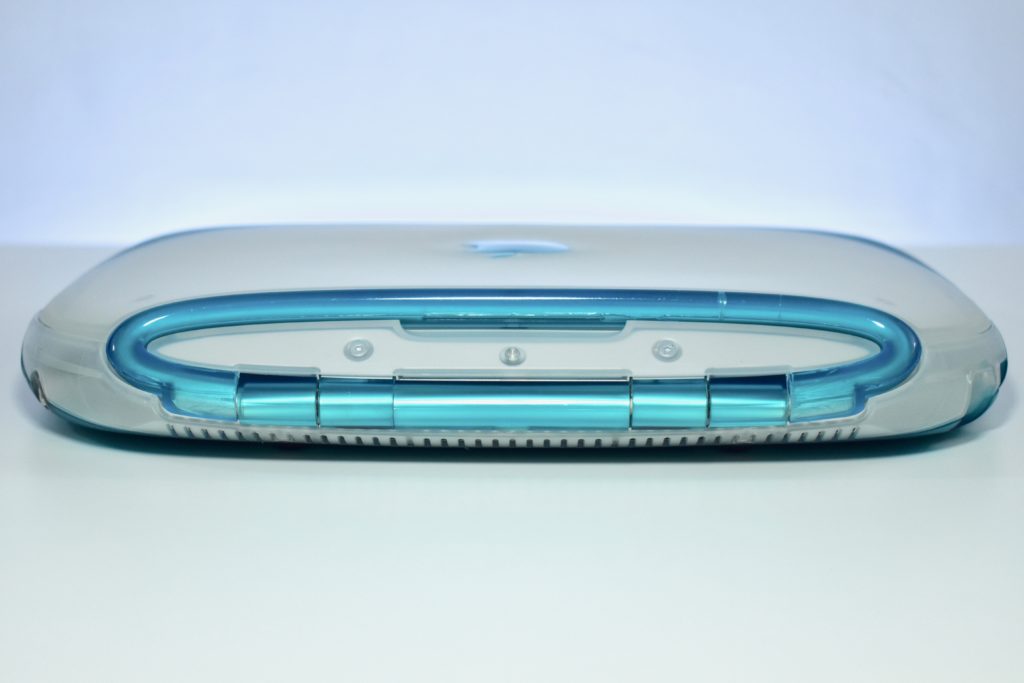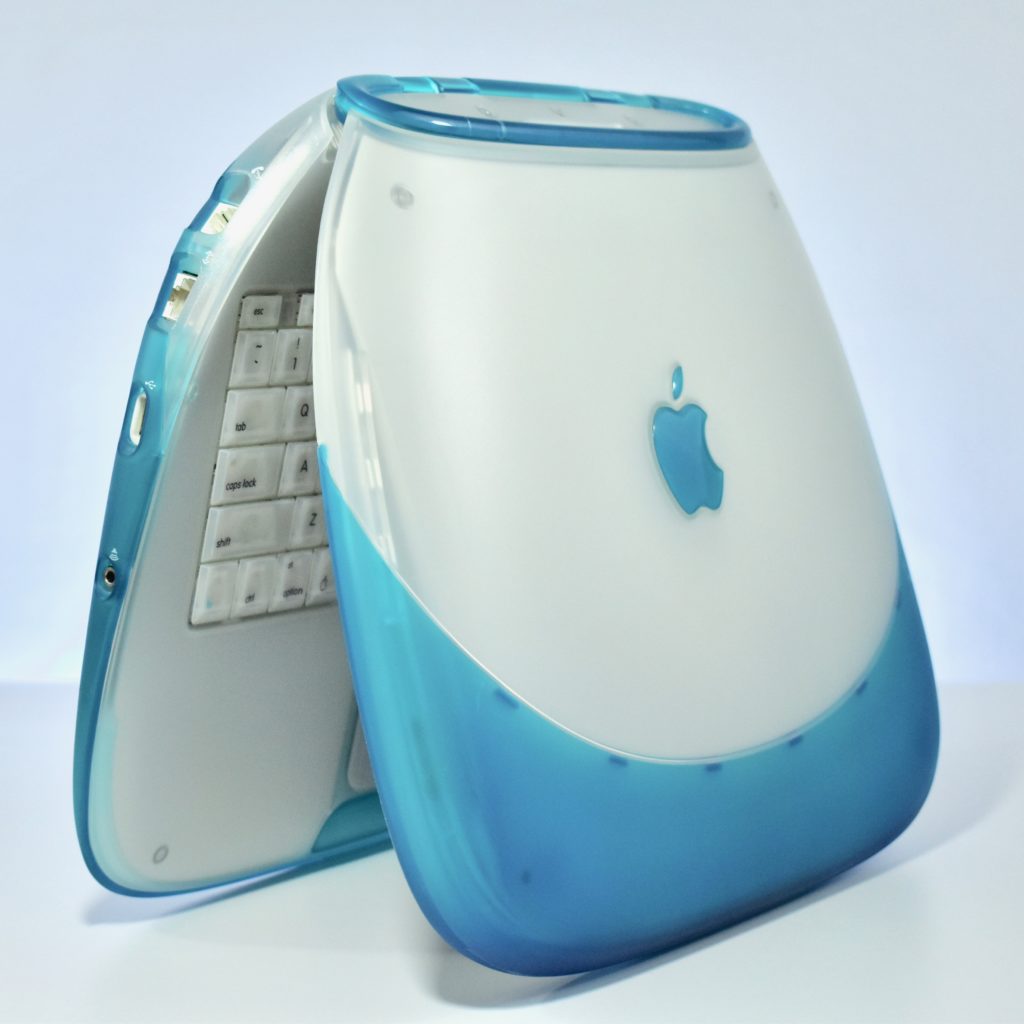Following the success of the original iMac, the iBook G3/300 was released as portable Mac for consumers with a radical design. The original iBook was available in blueberry and tangerine, two of the five colors available for iMac at the time. The design is sometimes referred to as the “clamshell.”
The iBook shipped with 32 MB or 64 MB of RAM, a 3.2 GB or 6.0 GB hard drive, and a 12.1-inch TFT active matrix display at 800×600. The case featured a handle on the back that folded out when in use and sprang back into place.
Although portable Mac options were not new at the time with years of PowerBook models that preceded the iBook, Wi-Fi was still not common in 1999. The iBook was available with an optional AirPort wireless networking card. Many consumers who purchased an iBook also likely needed an AirPort Base Station to plug into their modem to set up their first home wireless network.
My first full-time technology director position in a school district is where I first encountered the iBook and AirPort Base Station. The Director of Special Education had purchased an iBook for each Special Education teacher to assist in supporting students with Individualized Educational Plans and deal with the extensive paperwork that is required. Although it is fairly commonplace now for teacher and students to have a technology device assigned to them, in 1999–2000 this practice was considered quite innovative.
This example is a blueberry iBook, complete with an internal AirPort wireless networking card. In my experience, schools in my area tended to purchase the blueberry iBook over the tangerine option.
Source: EveryMac.com













